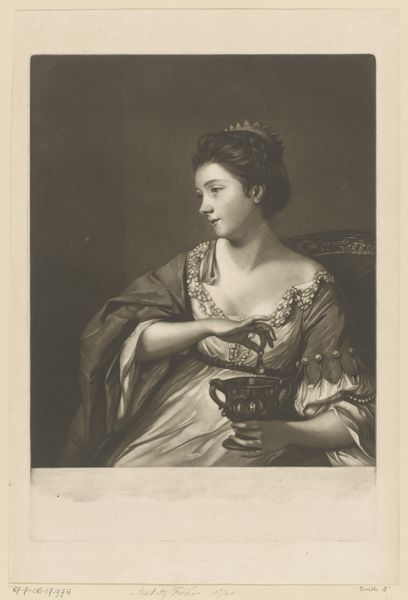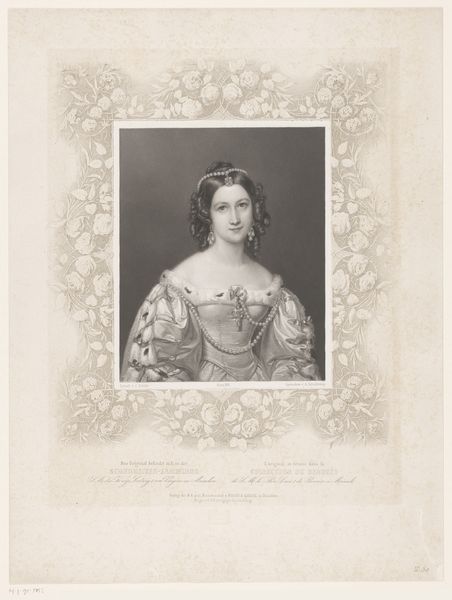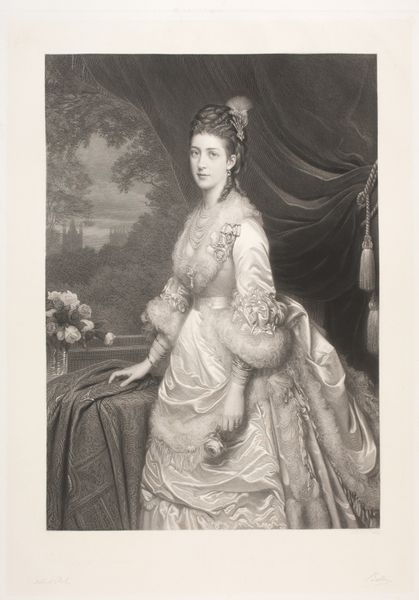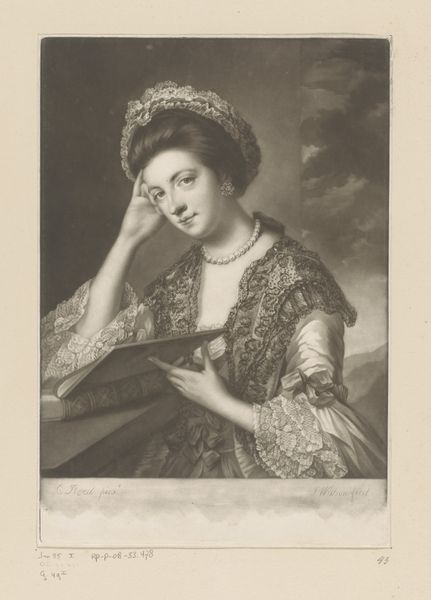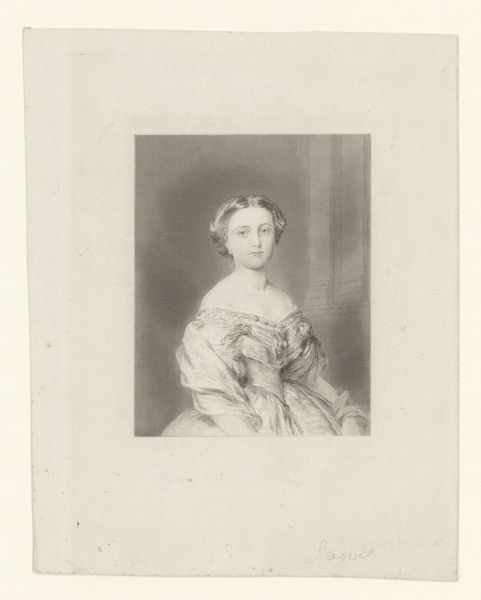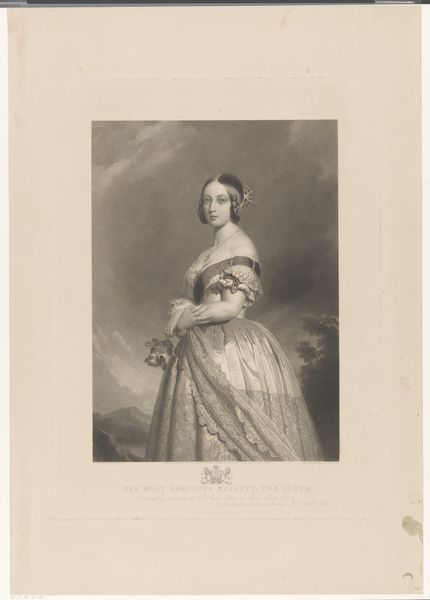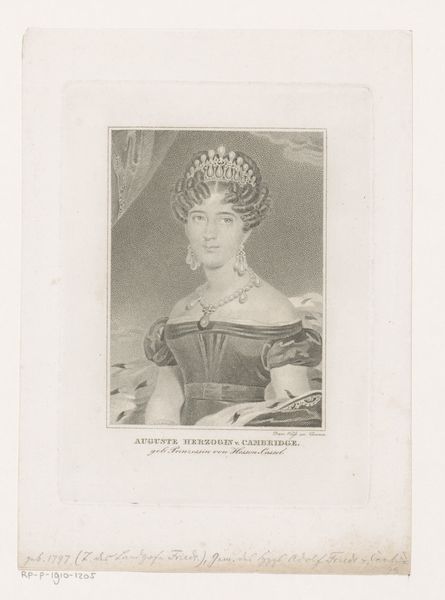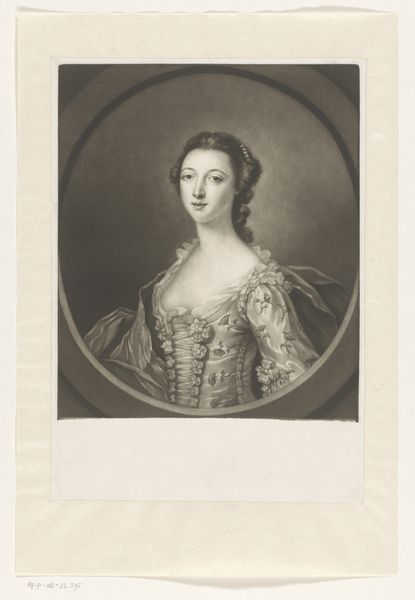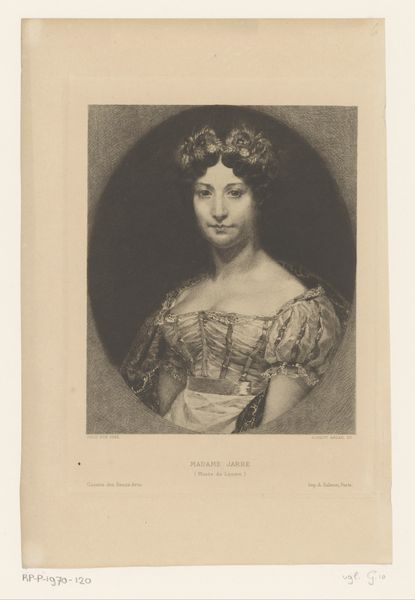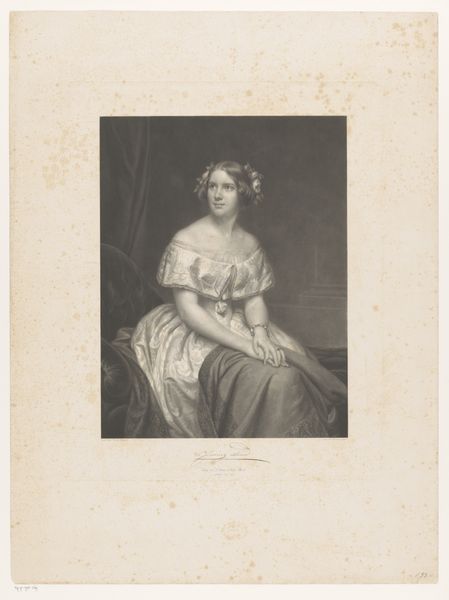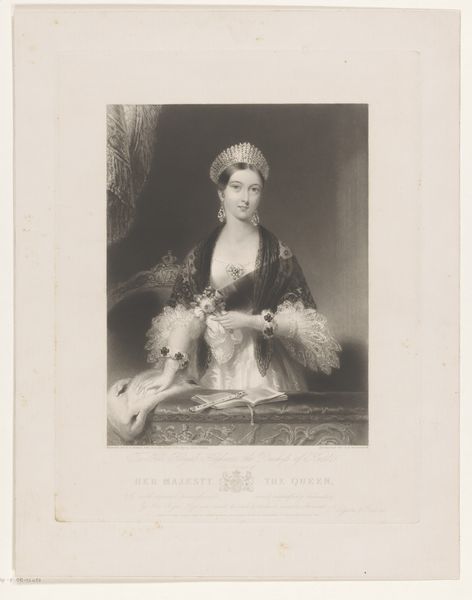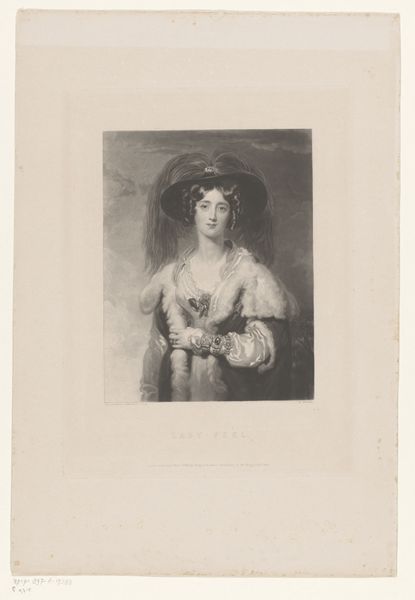
Copyright: CC0 1.0
Curator: Looking at this engraving by Louis Pierre Henriquel-Dupont, entitled "Madame Pasta, as Anne Boleyn," I'm immediately struck by how the artist has captured the sitter's regal and melancholic essence. Editor: Yes, there's an undeniable weight to her gaze. The pearls and crown, icons of status, seem almost like burdens, don’t they? Anne Boleyn's story is all about outward display and inner turmoil. Curator: Exactly. The choice of depicting Giulia Grisi—the opera singer Madame Pasta—as Anne Boleyn is fascinating. Both women were performers, figures of public fascination and scrutiny. The organ in the background hints at both the sacred and performative aspects of their lives. Editor: It is a brilliant connection. I think it's less about historical accuracy, and more about the symbolic power of the image, and the cultural memory of the ill-fated Queen. It is like a visual echo, resonating through time. Curator: It is. This portrait, with all its layered meanings, leaves one with a lingering sense of history, drama, and the complexities of female representation. Editor: Indeed—a study in how symbols can reflect not just a moment, but a whole narrative.
Comments
No comments
Be the first to comment and join the conversation on the ultimate creative platform.
